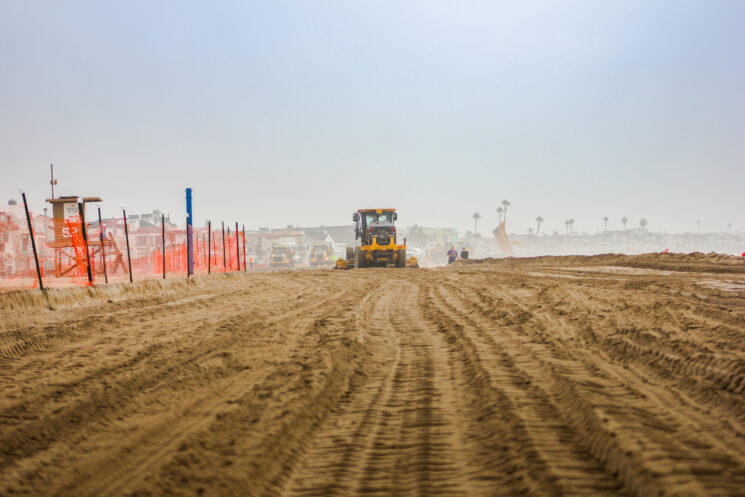
By Tyler Josephson
Frequent beachgoers may have noticed a trend over the past few years: beach sand is disappearing. At this rate, local beaches may be completely gone by the year 2100 due to sand erosion.
The Orange County Beach Erosion Control Project, properly known as the Surfside Sunset Project by the U.S. Army Corps of Engineers Los Angeles District (USACE), is combating this concern. Today, the Surfside Sunset Project is restoring 17 miles of beaches from Seal Beach to Newport Harbor via 1.8 million cubic yards of sand being dredged from the ocean.
The bulk of the Surfside Sunset Project uses sand dredged two miles offshore and pumped back onto land. Specifically, beaches along the Balboa Peninsula are being restored via sand around the Santa Ana River’s mouth.
Sand dredging reverses natural erosion from waves that pull sand back into the ocean. USACE’s current project began operation in late November 2023 and is expected to finish in February 2024.
According to USACE, sand replenishment should occur every five to seven years since sand erosion is a natural process that will continue to pull sand away from beaches. Dredging operations regularly occurred from the 1960s until 2009, when federal funding was cut. For the past 14 years, Orange County’s beaches have been slowly eroding into the sea.
Fortunately, in 2023, local cities including Huntington Beach and Newport Beach advocated to the State of California to grant funds to reignite sand replenishment. In October 2023, the Surfside Sunset Project was approved with $15.5 million of federal funds, with the possibility of continuing for the next 50 years.
Beachgoers can expect operating noise from heavy equipment and partial closures due to the dredging. Beaches affected by the project are to remain open to the public. Turbulent water and changes in swimming conditions are to be expected where sand is moved to and from.
A similar project is taking place in South Orange County, where the San Clemente Shoreline Project is an ongoing sand dredging project on the beach near San Clemente Pier.
Local cities prompted these projects after heavy storms and record-high tides led to major flooding and property damage during past wet seasons. A major storm during last year’s rain season led to $6.4 million in property damage and repair costs, according to Patch, a local news provider.
High tides and heavy storms are causing most of the erosion, according to LAist. Some beaches are becoming so short that powerful tides reach surface streets or slam against waterfront homes. With the lack of sand, storm tides can reach property fronts and city streets, as explained by the San Francisco Chronicle.
Steps like current sand replenishment measures will provide support to beaches where it’s needed, hopefully minimizing damage to local communities.





